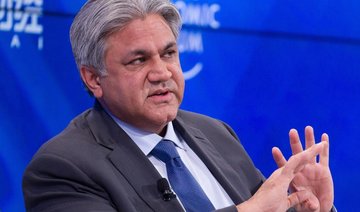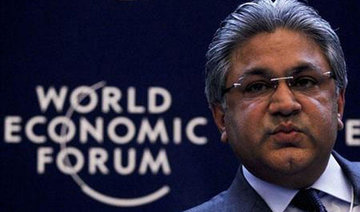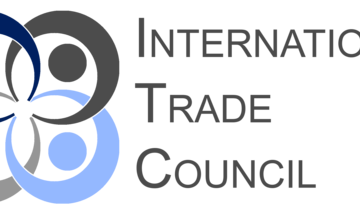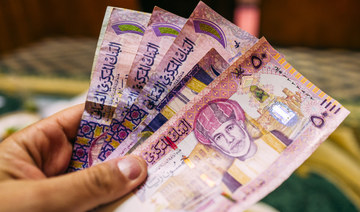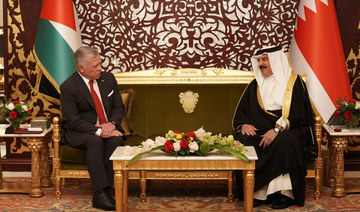DUBAI: The chief financial officer of Dubai-based Abraaj Holdings told Reuters he had left the embattled private equity company.
Two other senior executives are also preparing to leave, three people with direct knowledge of the matter said. The investment firm, which manages $13.6 billion in assets, is also considering a round of job cuts, they said.
Abraaj has shaken up its management, suspended new investments and undertaken a review of its corporate structure following a dispute with four of its investors over the use of their money in a $1 billion health care fund.
Abraaj has always denied reports that it misused the money but the scandal at the Middle East’s largest private equity firm is seen to have taken the shine off a fast-growing sector in the region.
The investors include the Bill & Melinda Gates Foundation and the World Bank’s IFC arm. Officials at the Gates Foundation and IFC have declined to comment on the dispute.
Ashish Dave, Abraaj’s CFO and partner, confirmed that he had left the firm.
“I resigned six months ago to spend time with my family and pursue other opportunities,” he told Reuters on Sunday.
A new chief financial officer, appointed from within the company, would be announced soon, one of the sources said.
CEO Arif Naqvi, who founded the firm in 2002 and turned it into a major emerging market investor, stepped aside from running the fund, Abraaj Investment Management, in February. He will remain chief executive of Abraaj Holdings, which was separated from the fund as part of the changes.
The three sources said that Mustafa Abdel-Wadood, managing partner and global head of private equity, and Ahmed Badreldin, head of MENA private equity, informed Abraaj several months ago that they wanted to leave but were asked to stay on to help support the company during a difficult period.
Badreldin told Reuters by phone that he had not resigned from the company.
An Abraaj spokeswoman said both Badreldin and Abdel-Wadood were still in their positions at the firm.
“Ahmed (Badreldin) remains a partner and head of the MENA region,” she said in a statement.
She also referred Reuters to its statement on Feb. 23 that said Abdel-Wadood continues in his full-time role as a member of the Global Investment Committee and as managing partner of Abraaj Investment Management.
A round of job cuts is also expected at the firm, the sources said, but the newly appointed co-chief executives have yet to make a final decision on the matter.
The spokeswoman did not comment on the job cuts. The statement said that Abraaj had announced a comprehensive re-organization of its business and an independent review of its structure. The review is expected to be completed within a few weeks.
Abraaj said last month it had appointed KPMG in January to look into the finances of the health care fund and within days it said the auditor had completed findings and verified all payments in line with agreed procedures.
The four investors had separately hired forensic accountants Ankura Consulting to investigate how money was used in the Abraaj Healthcare Fund, a source close to one of the firms told Reuters last month. Ankura did not respond to a Reuters request for comment.
Last week, Abraaj told Reuters that the firm had begun freeing large investors from millions of dollars in capital commitments after deciding to suspend its new fund.
In the last year, Abraaj has seen other high-profile departures due to friction over the company’s rapid growth, two of the sources familiar with the matter told Reuters. They said the departures included Tom Speechley, a partner and former head of the firm’s North America business, and Walid Bakr, a managing director who focused on Egypt.
They could not be reached for comment and the Abraaj spokeswoman declined to comment.
CFO says he left Dubai-based private equity firm Abraaj
CFO says he left Dubai-based private equity firm Abraaj

King Khalid International tops Saudi airport rankings with 82% compliance rate: GACA report
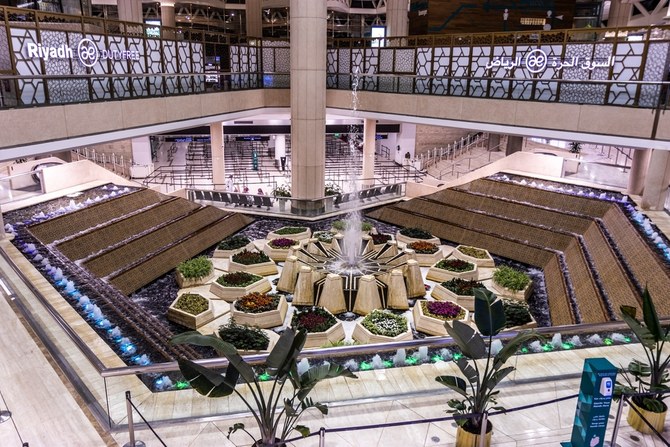
RIYADH: Saudi Arabia’s King Khalid International Airport emerges as one of the top three performing terminals in the Kingdom, according to official data.
The Riyadh-based aviation facility topped the category for international terminals with over 15 million passengers annually, achieving an 82 percent compliance rate with the General Authority of Civil Aviation’s standards.
In its monthly report for April, GAC outlined the performance of the country’s airports, highlighting King Fahd International Airport and Abha International Airport as premier travel hubs.
Based on 11 key criteria, the evaluation aims to improve service quality and enhance the passenger experience.
King Abdulaziz International Airport in Jeddah came second with the same commitment rate but was outperformed by King Khalid International in meeting the criteria.
King Fahd International Airport led the category for international airports with 5 to 15 million passengers annually, also with a 91 percent commitment rate. Prince Mohammad bin Abdulaziz International Airport in Madinah, which had the same commitment rate, was second.
In the category of international airports with 2 to 5 million passengers annually, Abha International Airport secured the top spot with a 100 percent commitment rate, outperforming King Abdullah bin Abdulaziz Airport in Jazan, which also had a 100 percent commitment rate but lagged in meeting the criteria.
Al-Qaisumah International Airport ranked first among international terminals with fewer than 2 million passengers annually, with a 100 percent commitment rate, excelling in average waiting times for departure and arrival flights.
Arar Airport achieved the highest performance among domestic terminals, with a 100 percent commitment rate, leading in average waiting times for departure and arrival flights.
GACA’s performance evaluation is based on essential criteria such as passenger waiting times, time spent at baggage claim, and passport and customs areas, alongside standards related to accessibility for persons with disabilities and other global best practices.
In an additional report released earlier in April, GACA revealed that the volume of air cargo handled by airports in the Kingdom saw an annual rise of 7 percent in 2023 to reach 918,000 tonnes.
The analysis stated that the Kingdom’s aviation sector strongly rebounded in 2023, with airports witnessing a 26 percent rise in passenger transportation compared to 2022.
GACA said that flight facilities in Saudi Arabia transported 112 million passengers last year, an 8 percent increase compared to 2019.
The report revealed that the number of flights through the Kingdom’s airports in 2023 reached about 815,000, an increase of 16 percent compared to 2022.
In 2023, airports in Saudi Arabia handled 394,000 international and 421,000 domestic journeys, the authority added.
SME financing in Saudi Arabia surges 20.4% in Q4
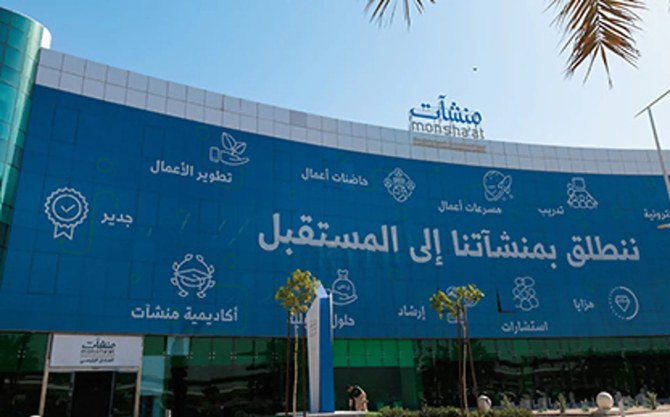
RIYADH: Financing provided to small and medium enterprises in Saudi Arabia surged by 20.4 percent year on year to $73.5 billion in the fourth quarter of 2023, official data showed.
In its latest quarterly report, the Kingdom’s Small and Medium Enterprises General Authority said that credit facilities provided to micro and SMEs amounted to $6.7 billion and $24.6 billion, respectively, in the last three months of 2023.
On the other hand, medium enterprises in the Kingdom secured finance worth $42.2 billion in the last quarter of the previous year.
The authority, also known as Monsha’at revealed that banks in Saudi Arabia provided credit facilities worth $68.9 billion in the fourth quarter of 2023, representing a rise of 21.1 percent compared to the same period of the previous year.
On the other hand, finance companies in the Kingdom provided loans amounting to $4.6 billion in the last three months of 2023, marking a year-on-year rise of 9.3 percent.
Developing the SME sector is crucial for Saudi Arabia as the Kingdom is currently on a path of economic diversification, as it steadily reduces its dependency on oil.
The report revealed that 9,644 SMEs were benefitted from Monsha’at support centers in the first quarter of this year.
Moreover, three SMEs had their initial public offering on the parallel market Nomu through the Tomoh program in the first quarter of 2024.
Monsha’at also revealed that Saudi Arabia led venture capital funding in the Middle East and North Africa region with $240 million deployed across 35 deals in the first quarter of this year.
“With $240 million deployed across 35 deals to Saudi-based companies, the Kingdom accounted for a remarkable 65 percent of all VC funding in the region,” said the authority.
The report attributed 54 percent of this VC funding to the $130 million pre-initial public offering secured by Salla in March.
“While the $240 million invested in the first quarter maintains the Kingdom’s dominance, it did reflect a considerable quarterly drop of 70 percent from the fourth quarter of 2023, along with a 42 percent year-on-year drop. This downturn mirrors the broader trend across the MENA landscape,” said Philip Bahoshy, founder and CEO of venture capital data platform MAGNiTT.
He added: “Digging deeper, it becomes evident that while the overall funding has diminished, the Kingdom’s entrepreneurial ecosystem continues to attract investors.”
Oman’s banking sector sees 2.9% rise in credit to $80bn by end of March
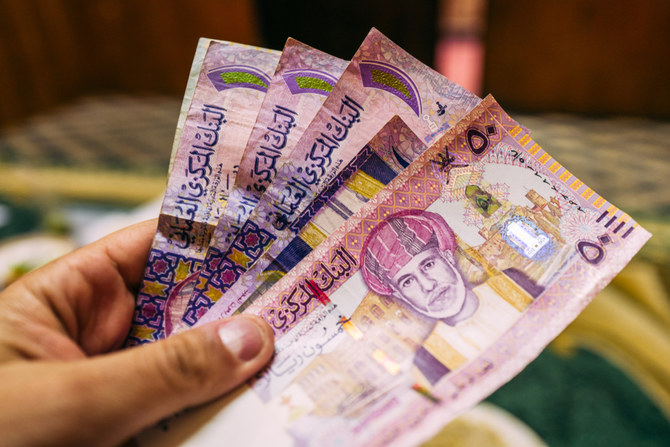
RIYADH: Oman’s banking sector experienced a 2.9 percent rise in total credit, reaching 30.8 billion Omani rials ($80 billion) by the end of March, official data showed.
In its monthly review of banking and monetary developments, the Central Bank of Oman disclosed that credit to the private sector rose by 3.6 percent year-on-year, reaching 25.9 billion rials by the end of March.
Non-financial corporations held the largest share of the total private sector credit, accounting for approximately 45.4 percent by the end of March, followed closely by households at 45 percent.
Financial corporations constituted 5.8 percent of the total, while the remaining 3.8 percent was allocated to other sectors.
Total deposits held with other depository corporations witnessed a significant year-on-year growth of 11.7 percent, reaching 30.3 billion rials at the end of March, while total private sector deposits grew by 13.7 percent to 20.2 billion rials.
The increase in private sector credit and deposits reflects robust economic activity and confidence in the financial system.
Regarding the sector-wise composition of private sector deposits, household holdings contributed the most at 49.8 percent, followed by non-financial corporations at 30.9 percent, financial corporations at 16.5 percent, and other sectors at 2.8 percent.
The combined balance sheet of conventional banks showed a year-on-year growth of 0.8 percent in total outstanding credit as of the end of March.
Credit to the private sector increased by 1.6 percent, reaching 20.3 billion rials, while overall investments in securities surged by 28.0 percent to 5.7 billion rials.
Investment in government development bonds decreased by 17.1 percent to 1.8 billion rials, while investments in foreign securities saw a dramatic increase of 139.0 percent to 2.3 billion rials.
Moreover, aggregate deposits in conventional banks experienced significant growth, while government deposits declined. Public enterprise holdings increased substantially, and private sector deposits rose.
Simultaneously, Islamic banks and windows witnessed notable growth in total assets, financing, and deposits, underscoring their expanding role within the banking system.
The report further highlighted that the nation’s nominal gross domestic product declined by 2.8 percent at the end of the fourth quarter of 2023, primarily due to a significant drop in the hydrocarbon sector despite growth in the non-hydrocarbon sector.
However, real GDP increased by 1.3 percent during the same period. Both the average oil price and daily production saw decreases, while inflation remained minimal.
Saudi fashion industry projected to expand by 48% by 2025

RIYADH: Saudi Arabia’s fashion industry is set to post a cumulative annual growth of 48 percent from 2021 to 2025 as the Kingdom diversifies its economy, a report said.
In its latest quarterly release, the Small and Medium Enterprises General Authority said that Saudi Arabia’s Fashion Commission is playing a crucial role in building a more robust ecosystem to propel the sector’s growth.
The authority, also known as Monsha’at, revealed that the fashion industry contributed 1.4 percent of the Kingdom’s gross domestic product in 2022.
The report added that the total value of the fashion sector in Saudi Arabia, including international brands, stood at $24.6 billion in 2022.
On the other hand, the domestic fashion industry in the Kingdom was worth $12.5 billion in 2022.
“Saudi Arabia has embarked on a profound transformation across multiple industries. This renaissance spans architecture, music, film, art, food, and more. Through diverse initiatives at the Fashion Commission, we are revolutionizing the fashion sector and elevating our talents to global stages while adhering to the core pillars that drive growth and sustainability,” said Burak Cakmak, CEO of the Fashion Commission.
He added: “Due to several strategic initiatives that fostered a dynamic ecosystem of creativity and business acumen, the growth of the fashion industry in Saudi Arabia over the past few years has been unprecedented.”
Cakmak said that developing local talent in the Kingdom is one of the crucial missions of the Fashion Commission.
He added that the organization has initiated comprehensive educational programs, workshops, and mentorship opportunities to develop the growth of Saudi nationals in the sector.
The official also noted that the commission assists small and medium enterprises operating in the sector in growing and expanding their businesses.
“We also advance the industry by providing essential support to entrepreneurs and SMEs, offering assistance and resources that help businesses scale. Regulatory frameworks are established and enforced to ensure ethical practices and sustainability, while cultural preservation initiatives highlight Saudi heritage, promoting it both locally and globally,” said Cakmark.
The Monsha’at report added that the fashion industry in Saudi Arabia has employed over 230,000 people as of 2022, and 52 percent of the workforce is female.
The authority revealed that the women’s apparel market in the Kingdom will witness a 20 percent growth by 2027, while the men’s market is set to expand by 27 percent during the same period.
Cakmak added that participation in international fashion events by Saudi companies will help affirm the place of the Kingdom in the global arena.
“Market expansion efforts, including marketing campaigns and participation in international fashion events, further enhance the visibility and competitiveness of Saudi fashion brands. All of these are core strategic pillars that effectively nurture a vibrant, dynamic, and globally competitive fashion industry in the Kingdom,” Cakmak noted.
He concluded: “We believe that the future of Saudi fashion lies in the hands of our talented designers and visionary entrepreneurs. As we continue to support and nurture these individuals, we are confident that the Kingdom’s fashion industry will continue to flourish.”
S&P reaffirms Bahrain’s credit rating amid fiscal challenges; outlook stable
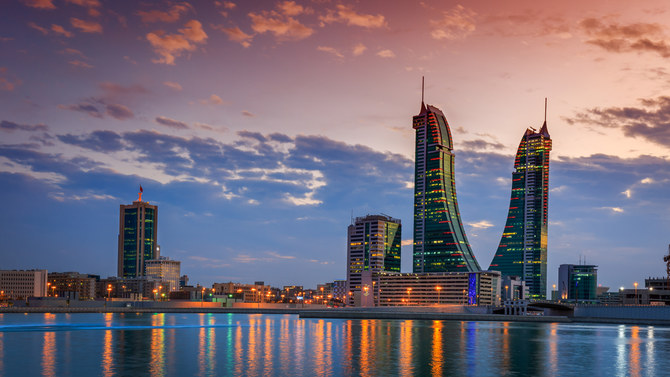
RIYADH: Bahrain’s commitment to fiscal consolidation has witnessed S&P Global Ratings reaffirm its “B+/B” credit standing with a stable outlook despite challenges in 2023.
However, the agency added that the transfer and convertibility assessment on the Gulf state remains “BB-.” It also anticipated structural reforms aimed at strengthening the non-oil revenue base, albeit at a slower pace.
In its report, S&P said that the stable outlook reflects the expectation that Bahrain will persist in implementing measures to reduce its budget deficit, possibly benefiting from additional support from other Gulf Cooperation Council sovereigns if necessary.
Conversely, the ratings could improve if Bahrain’s fiscal situation exceeds expectations, leading to a reduction in net debt relative to gross domestic product, or if current account surpluses widen, bolstering the country’s external position, according to the study.
However, potential downside risks include a significant increase in government debt or a sharp decline in foreign currency reserves, which could hinder debt servicing and monetary policy effectiveness.
“We could lower the ratings if the government’s net debt and debt-servicing burden increased significantly beyond our assumptions, presenting funding challenges. We could also take a negative rating action if foreign currency reserves declined sharply, limiting the government’s ability to service its external debt and weighing on monetary policy effectiveness,” the report said.
On the other hand, the rating agency outlined an optimistic scenario for Bahrain, stating that it might upgrade the country’s standing if the government surpasses expectations by substantially reducing net debt relative to GDP through improved budgetary performance.
Additionally, the ratings could increase if the current account surpluses are expanded significantly and consistently enhance the island state’s external position.
The agency noted that its assessment is based on the anticipation that the Bahraini government will fortify its financial stance up to 2027, notwithstanding the considerable deficit expansion in 2023.
It added that the shortfall experienced last year was primarily influenced by elevated interest rates, a one-off lump sum social support program, and an upward adjustment in pensioners’ inflationary allowance that will continue into 2024.
Considering this initial setback, S&P foresees broader fiscal deficits averaging 4.4 percent of GDP from 2024 to 2027, compared to 3.8 percent in its prior evaluation.
“A decline in oil production due to ongoing maintenance at the Abu Safa oil field also affects our revenue assumptions. However, we believe the government will continue pursuing fiscal and structural reforms to strengthen its non-oil revenue base, allowing for continued, albeit slower, fiscal consolidation over our forecast horizon to 2027,” the agency said in its report.
Moreover, S&P assumed that Bahrain would receive the remaining $2.8 billion of the $10.2 billion GCC support package pledged by Saudi Arabia, the UAE, and Kuwait in 2018, and there remains potential for additional financial support beyond the program’s expiration at year-end 2024 if needed.
“These interest-free loans have historically covered about 50 percent of the government’s gross external financing needs, although we note disbursements are not tied to, and do not necessarily align with, Bahrain’s external debt repayments,” the agency said.
It further highlighted that Bahrain encounters annual external debt redemptions ranging from $2.0 billion to $2.5 billion, equivalent to 5 percent of GDP, stemming from a mix of Eurobond and sukuk issuances.
In February, S&P explained that Bahrain successfully raised $2 billion by issuing a seven-year, $1 billion sukuk at 6.0 percent and a 12-year, $1 billion conventional bond at 7.5 percent.
“We understand the issuance was met by strong investor demand, supporting more favorable pricing dynamics. In our base-case, we assume Bahrain will maintain strong access to international capital market funding,” it added.
It explained that the country’s relatively diverse economy, proximity to Saudi Arabia’s market, robust financial sector oversight, and educated workforce provide a foundation for resilience. However, stagnant GDP per capita levels, adjusted for population growth, suggest underlying challenges in achieving broad-based economic prosperity.
“However, when GDP performance from 2017-2027 is adjusted for population levels, GDP per capita levels are largely flat, suggesting that labor supply, rather than productivity, remains the key growth spur. We view Bahrain as having a relatively wealthy economy and estimate GDP per capita at $27,58 in 2024,” it said.


